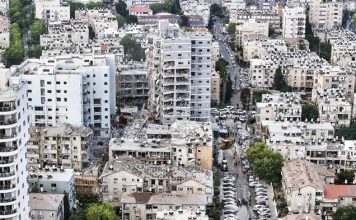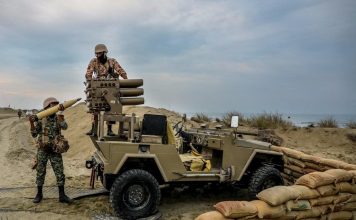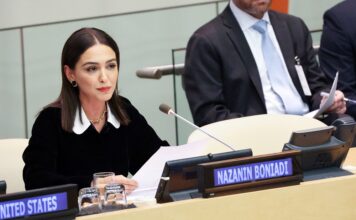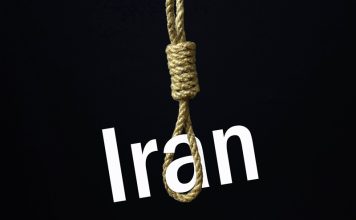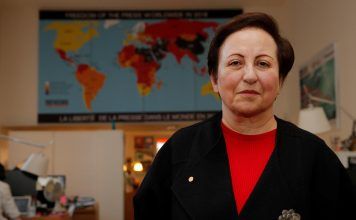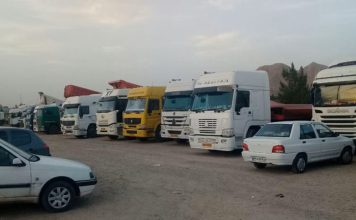At least 251 people were executed in Iran between Jan. 1 and June 30, according to research by Amnesty International and the Washington-based Abdorrahman Boroumand Center for Human Rights in Iran (ABC).
An estimated 45 people were executed in the month of June alone, according to a report by the United States-based Human Rights Activists’ News Agency (HRANA).
Amnesty said the Iranian authorities had “embarked on an execution spree” in a July 27 press release, and called for a moratorium on the death penalty in the country.
“During the first six months of 2022, the Iranian authorities executed at least one person a day on average,” Diana Eltahawy, deputy regional director for the Middle East and North Africa at Amnesty International said in the statement. “The state machinery is carrying out killings on a mass scale across the country in an abhorrent assault on the right to life. Iran’s staggering execution toll for the first half of this year has chilling echoes of 2015 when there was another shocking spike.”
[aesop_image img=”https://kayhanlife.com/wp-content/uploads/2021/09/2021-09-11T000000Z_1107773290_MT1NURPHO000VT5J22_RTRMADP_3_STANDING-FOR-HUMAN-RIGHTS-IN-IRAN-PROTEST-IN-EDMONTON-scaled.jpg” panorama=”off” credit=”Photo by Artur Widak/REUTERS./” align=”center” lightbox=”on” captionsrc=”custom” caption=”A protester holds posters with Navid Afkari images. Members of the local Iranian diaspora, gathered in front of the Alberta Legislature building during the protest ‘Standing for Human Rights in Iran’ on the eve of the first anniversary of the execution of Navid Afkari. Navid Afkari was an Iranian wrestler who was sentenced to death and executed after having been falsely accused and convicted of murdering a security guard during the 2018 Iranian protests. On Saturday, September 11, 2021, in Edmonton, Alberta, Canada. ” captionposition=”left” revealfx=”off” overlay_revealfx=”off”]
Amnesty’s figures for executions in 2015 showed that at least 694 people had been executed in Iran between Jan. 1 and July 15, the equivalent of executing more than three people a day.
The human rights watchdog said that most of the executions carried out in the first half of 2022 were for murder convictions following “grossly unfair” trials.
Meanwhile, the Iranian government carried out its first public execution in two years on July 23, according to the Norway-based non-governmental organization Iran Human Rights (IHR).
Iman Sabzikar was convicted of murdering a police officer in February and sentenced to death by hanging. IHR said that the last recorded public execution took place on June 11, 2020.
Several family members of imprisoned Iranians now fear that their loved ones will also be executed. Gazelle Sharmahd, daughter of the detained German-Iranian journalist Jamshid Sharmahd, said her father’s final court hearing was on July 26 and that his death sentence was “already predetermined by the leaders of the Islamic regime of Iran.” She made the statement in a July 25 tweet.
Jamshid Sharmahd was convicted on the charge of “enmity against God” for his alleged involvement with opposition group the Kingdom Assembly of Iran. Amnesty said Sharmahd was forced to make false confessions on television and was subjected to torture and inhumane treatment while in prison.
“The death penalty is used as a political tool or a tool for oppression,” Professor Mahmood Amiry-Moghaddam, IHR’s founder told Kayhan Life in a May 4 interview.
There is “a meaningful correlation between the timing of executions and political events,”
IHR wrote in an April 28 report on executions in 2021.
Execution rates tend to decrease in the weeks running up to parliamentary and presidential elections, to Nowruz [the Persian new Year] and to the holy month of Ramadan, the report said. They rise sharply after elections and when authorities expect protests to occur, the report added.
Iran has been rocked by nationwide anti-government protests in recent years amid rising inflation, high unemployment and soaring poverty. Protests in 2022 have escalated on account of price hikes on basic goods such as bread; teachers’ wages and working conditions; and water shortages in the poverty-stricken province of Khuzestan.


